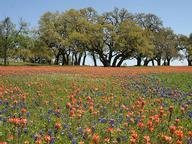Quiz Answer Key and Fun Facts
1. ANZAC Day is celebrated on the anniversary of the first battle fought by the Australian and New Zealand Army Corp, known as the ANZACs, in World War I. On what day did the landing at the Gallipoli peninsula commence?
2. ANZAC Day celebrations start with a dawn service. Why is the service held at that time?
3. In Melbourne, the central dawn service is held on the grounds of a building constructed to provide a local place to recall and honour the thousands of Victorians who died in World War I. What is its name?
4. The dawn services for ANZAC Day almost always include a few key activities. One of these is the recitation of the fourth verse of the poem "For the Fallen", by Laurence Binyon. What is the name usually used for this stanza?
5. Another central feature of ANZAC Day dawn services is the playing on a bugle of a piece of music traditionally played by British forces to mark the end of the day and at military funerals. What is it called?
6. On their way out of the dawn service, in a number of venues, participants are invited to place a flower on or near the Roll of Honour of that venue. What type of flower, also and more widely associated with Remembrance Day, is most commonly laid in tribute?
7. A culinary tradition of ANZAC Day is the gunfire breakfast. While there are many variants on the ingredients of this meal, one thing is common to most of them (and is sometimes the only beverage served). Which of these is it?
8. Later in the morning, in capital cities and some regional cities and towns, there is a large commemorative march. Only soldiers who have fought overseas are allowed to march.
9. The ANZAC Day march is often followed by a visit to the pub, which can open for service at 1:00pm, or the RSL. While there, celebrants frequently engage in a gambling activity that was extremely popular among the ANZAC soldiers. Which of these games can only legally be played (outside of a licensed casino) on ANZAC Day?
10. As well as being a nation of gamblers, Australians are a known as a nation of sports fans. Which of these has been a regular feature of ANZAC Day since the 1990s?
Source: Author
looney_tunes
This quiz was reviewed by FunTrivia editor
stedman before going online.
Any errors found in FunTrivia content are routinely corrected through our feedback system.

